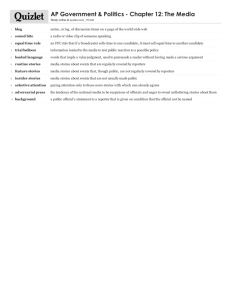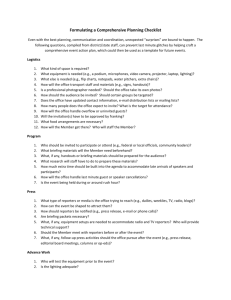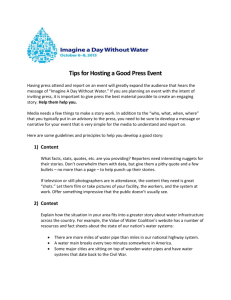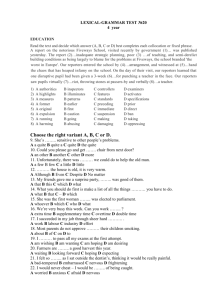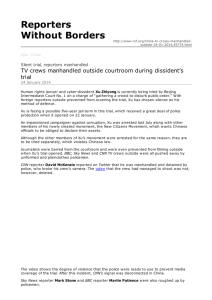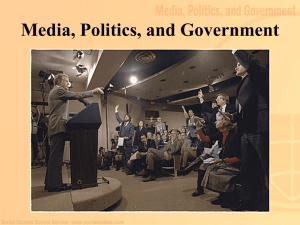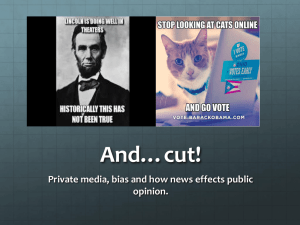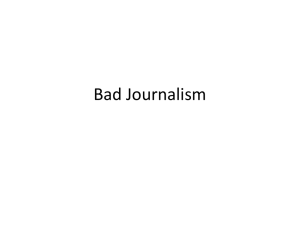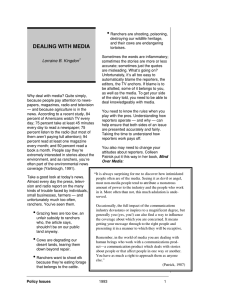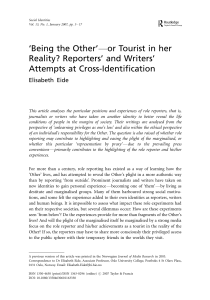presentation source
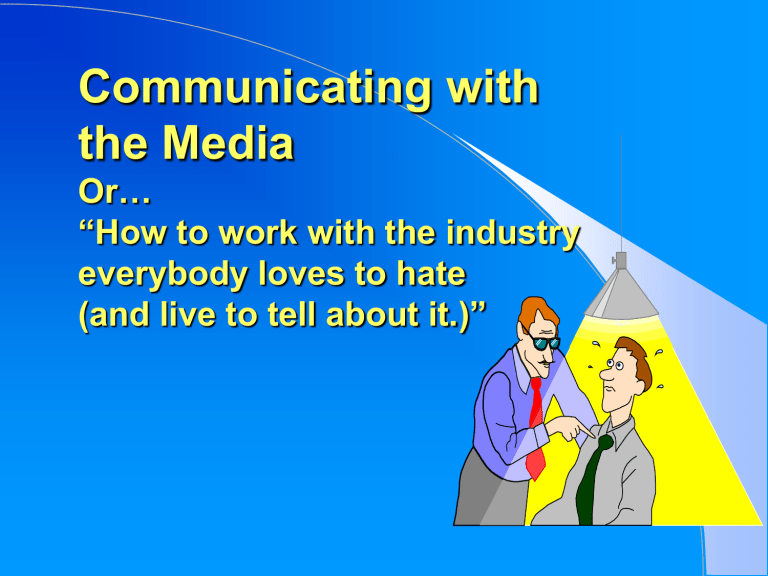
Communicating with the Media
Or…
“How to work with the industry everybody loves to hate
(and live to tell about it.)”
Overview
• What media relations is and how it can help you.
• Characteristics of news and reporters.
• Media relations strategies .
What media relations can do
• Enhance knowledge and understanding .
• Build credibility .
• Extend the reach and increase the frequency of your message.
What do YOU get?
• Exposure for yourself and for your program.
• New members/clients .
• Measure for accountability : newspaper/TV stories.
Who are the media?
• Media pass information to target audiences.
• Media act as filters .
• Media are in business for profit .
Develop a strategy
• Decide who is responsible for media contacts .
• Set goals and decide on your approach .
Develop a strategy
• Decide who is responsible for media contacts .
• Set goals and decide on your approach .
• Become a reputable and dependable expert source .
This should be a priority .
Develop a strategy
• Develop an office source book .
• Provide photos and/or photo opportunities .
• Send a letter to the editor .
Try this yourself…
• Write down how you can implement some of the strategy suggestions.
For example, who’s going to be the contact person? Make sure everyone in your office knows what to do when a reporter calls.
Where do you start?
• Get to know the reporters .
• Know reporters’ “beat” assignments .
• Contact them personally .
Phone calls, faxes, letters, visits.
Where do you start?
• Get to know the reporters .
• Know reporters’ “beat” assignments .
• Contact them personally .
Phone calls, faxes, letters, visits.
• Know what “ news ” is.
Getting interest in your story
• “Dog bites man” vs. “man bites dog”
Is your story visual ? Can it be told in 90 seconds?
Getting interest in your story
• “Dog bites man” vs. “man bites dog”
Is your story visual ? Can it be told in 90 seconds?
• Does it meet “ news value ” criteria ?
Determining
“news value”
• Is the information significant ?
• How many readers/viewers could benefit from it?
• Is the story timely ?
• Is it local or does it have local impact?
Media differences
• Newspapers -- Quotes, facts, information, pictures
Deadline of late afternoon for next morning’s paper.
Media differences
• Radio -- Short soundbites/ quotes (10-20 seconds), “natural sound”
All day.
Media differences
• TV -- Soundbites (10-20 seconds, action visuals
Mid-morning or early afternoon.
Try this yourself…
• Write down an idea for a story you think should be covered.
Does it meet “news value” criteria?
How can you make it “different”?
How can you “pitch” the idea to different media?
Understanding reporters
• Generalist , not a specialist.
• Personalize a story.
• Deadlines : Is it news TODAY ?
Understanding reporters
• Reporters are not educators.
Helping the reporter
• Tip sheet or news release.
• Visuals/audio.
• Setting.
• Directions/travel.
• Understandable terms.
• Several sources/resources.
Publicity
• Tip sheet/news release.
• Public service announcements
(PSAs).
• Letter to editor.
Try this yourself…
• Write a short tip sheet (or news release) about the story you would like to have covered.
• Write a PSA or letter to the editor.
So the story’s done....
• Don’t ask for a preview.
• Leave a phone number where you
(or another person) can be reached for follow-up.
• No guarantees on when (or IF ) the story will be aired or run.
What happened to
MY story?
• Preempted
• Story length.
• Information misunderstood or inaccurate.
If a mistake is made...
• Approach the situation thoughtfully .
• Don’t make a fuss over a small error .
• Big error : call the reporter (after you’ve calmed down). No satisfaction?
Call the editor or news director.
Summary
• Know reporters.
• Develop strategy.
• Be a news source.
Communicating with the Media
You may even enjoy working with the group everyone loves to hate!
